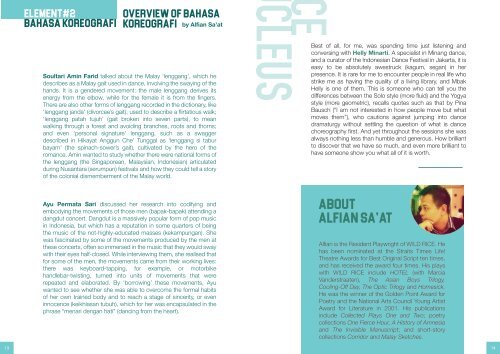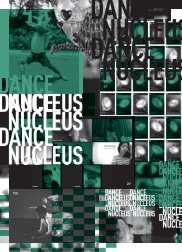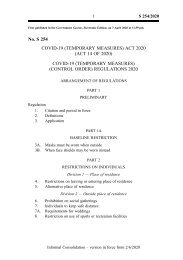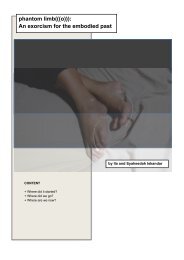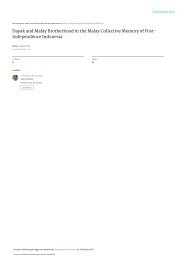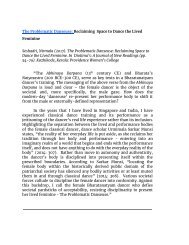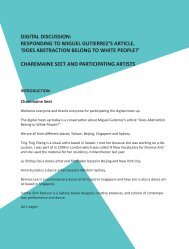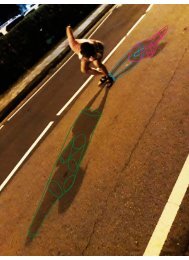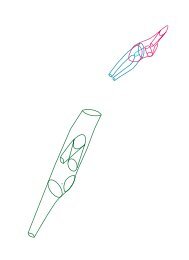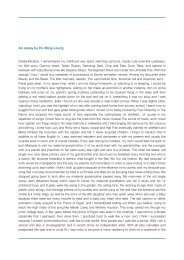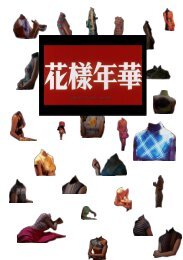FUSE#2
FUSE is a bi-annual publication that documents the projects at Dance Nucleus .
FUSE is a bi-annual publication that documents the projects at Dance Nucleus .
You also want an ePaper? Increase the reach of your titles
YUMPU automatically turns print PDFs into web optimized ePapers that Google loves.
Element#2<br />
BAHASA KOREOGRAFI<br />
OVERview of BAHASA<br />
KOREOGRAFI by Alfian Sa’at<br />
Soultari Amin Farid talked about the Malay ‘lenggang’, which he<br />
describes as a Malay gait used in dance, involving the swaying of the<br />
hands. It is a gendered movement: the male lenggang derives its<br />
energy from the elbow, while for the female it is from the fingers.<br />
There are also other forms of lenggang recorded in the dictionary, like<br />
‘lenggang janda’ (divorcee’s gait), used to describe a flirtatious walk;<br />
‘lenggang patah tujuh’ (gait broken into seven parts), to mean<br />
walking through a forest and avoiding branches, roots and thorns;<br />
and even ‘personal signature’ lenggang, such as a swagger<br />
described in Hikayat Anggun Che’ Tunggal as ‘lenggang si tabur<br />
bayam’ (the spinach-sower’s gait), cultivated by the hero of the<br />
romance. Amin wanted to study whether there were national forms of<br />
the lenggang (the Singaporean, Malaysian, Indonesian) articulated<br />
during Nusantara (serumpun) festivals and how they could tell a story<br />
of the colonial dismemberment of the Malay world.<br />
Best of all, for me, was spending time just listening and<br />
conversing with Helly Minarti. A specialist in Minang dance,<br />
and a curator of the Indonesian Dance Festival in Jakarta, it is<br />
easy to be absolutely awestruck (kagum, segan) in her<br />
presence. It is rare for me to encounter people in real life who<br />
strike me as having the quality of a living library, and Mbak<br />
Helly is one of them. This is someone who can tell you the<br />
differences between the Solo style (more fluid) and the Yogya<br />
style (more geometric), recalls quotes such as that by Pina<br />
Bausch (“I am not interested in how people move but what<br />
moves them”), who cautions against jumping into dance<br />
dramaturgy without settling the question of what is dance<br />
choreography first. And yet throughout the sessions she was<br />
always nothing less than humble and generous. How brilliant<br />
to discover that we have so much, and even more brilliant to<br />
have someone show you what all of it is worth.<br />
Ayu Permata Sari discussed her research into codifying and<br />
embodying the movements of those men (bapak-bapak) attending a<br />
dangdut concert. Dangdut is a massively popular form of pop music<br />
in Indonesia, but which has a reputation in some quarters of being<br />
the music of the not-highly-educated masses (kekampungan). She<br />
was fascinated by some of the movements produced by the men at<br />
these concerts, often so immersed in the music that they would sway<br />
with their eyes half-closed. While interviewing them, she realised that<br />
for some of the men, the movements came from their working lives:<br />
there was keyboard-tapping, for example, or motorbike<br />
handlebar-twisting, turned into units of movements that were<br />
repeated and elaborated. By ‘borrowing’ these movements, Ayu<br />
wanted to see whether she was able to overcome the formal habits<br />
of her own trained body and to reach a stage of sincerity, or even<br />
innocence (keikhlasan tubuh), which for her was encapsulated in the<br />
phrase “menari dengan hati” (dancing from the heart).<br />
About<br />
ALFIAN SA’AT<br />
Alfian is the Resident Playwright of W!LD RICE. He<br />
has been nominated at the Straits Times Life!<br />
Theatre Awards for Best Original Script ten times,<br />
and has received the award four times. His plays<br />
with W!LD RICE include HOTEL (with Marcia<br />
Vanderstraaten), The Asian Boys Trilogy,<br />
Cooling-Off Day, The Optic Trilogy and Homesick.<br />
He was the winner of the Golden Point Award for<br />
Poetry and the National Arts Council Young Artist<br />
Award for Literature in 2001. His publications<br />
include Collected Plays One and Two; poetry<br />
collections One Fierce Hour, A History of Amnesia<br />
and The Invisible Manuscript; and short-story<br />
collections Corridor and Malay Sketches.<br />
13 14


